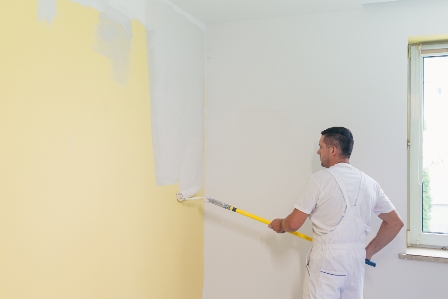
After restoring your space, one of the most effective ways to elevate its visual appeal is by applying stunning paint techniques to the walls. Mastering these techniques allows you to create captivating finishes that enhance the overall beauty of your space. Whether you prefer subtle textures, bold patterns, or artistic accents, the right paint application can transform ordinary walls into extraordinary focal points.
In this article, we will explore essential paint techniques that will help you achieve flawless finishes and unlock the full potential of your restored space.
Prepare the Surface
Before diving into paint application, it’s crucial to prepare the surface properly. Ensure the walls are clean, smooth, and free from any imperfections. Repair any cracks or holes, sand rough patches, and apply a suitable primer to create a uniform base for your paint application. Proper surface preparation sets the foundation for a flawless and long-lasting finish.
Brush and Roller Techniques
Brushes and rollers are fundamental tools for most paint application techniques. To achieve a smooth and even finish, use high-quality brushes and rollers designed for the specific paint type you’re using. When using a brush, load it with an adequate amount of paint and apply smooth, even strokes in the direction of the surface.
With a roller, apply consistent pressure and use overlapping strokes to create a seamless finish. Take your time and maintain a steady hand for professional-looking results.
Strie Technique
The strie technique adds subtle texture and depth to your walls, creating an elegant and sophisticated look. Start by applying a base coat in your desired color. Once it’s dry, use a dry brush or a strie brush to drag a glaze or a slightly different shade of paint in long, vertical, or horizontal strokes over the base coat. This technique creates delicate streaks that add visual interest and a touch of texture to your walls.
Sponge Painting
Sponge painting is a versatile technique that adds texture and dimension to your walls. It involves dabbing or stippling paint onto the surface using a natural sea sponge or a sponge applicator. Start with a base coat and let it dry. Then, dip the sponge into a different color and lightly dab it onto the walls, working in random patterns or creating specific designs. Experiment with layering colors and adjusting the pressure to achieve the desired effect.
Stenciling
Stenciling is a popular technique for creating intricate patterns, designs, or motifs on your walls. Choose a stencil that aligns with your desired aesthetic, secure it to the wall, and use a stencil brush or a sponge applicator to apply paint over the stencil openings. Gently tap or swirl the brush to ensure even coverage. Lift the stencil carefully to reveal the pattern.
Repeat the process, aligning the stencil as needed, to create a continuous design. Stenciling allows for endless possibilities, from simple geometric patterns to intricate floral motifs.
Ombre Effect
The ombre effect adds a beautiful gradient of color to your walls, creating a visually stunning and contemporary look. Start with a base coat and let it dry. Then, choose two or more shades of the same color in different intensities. Working from the bottom up, apply the darkest shade at the bottom of the wall, gradually transitioning to lighter shades as you move upward.
Blend the colors together using a dry brush or a blending sponge to create a seamless gradient. The hombre effect adds depth and visual interest to your walls.
Ragging Technique
Ragging is a faux-finishing technique that creates a textured, mottled effect on your walls. After applying a base coat and letting it dry, dip a clean rag or a crumpled cloth into a different shade of paint or glaze. Gently press the rag onto the wall, twisting and turning it as you move, to create a random pattern of color. This technique adds depth and dimension, giving your walls a unique and artistic look.
Trompe-l’oeil
Trompe-l’oeil, French for “deceive the eye,” is a technique that creates realistic illusions on your walls. With this technique, you can create the appearance of architectural details, such as columns, windows, or murals. It requires more advanced skills and may involve using stencils, freehand painting, or decal applications.
Trompe-l’oeil adds a touch of whimsy and sophistication to your space, transforming it into a visual masterpiece.
Experiment with Finishes
In addition to paint application techniques, consider experimenting with different paint finishes to enhance the overall look of your walls. Matte finishes create a smooth and velvety appearance, while satin finishes offer a subtle sheen. Glossy finishes add a high-shine and reflective effect, drawing attention to architectural details or accent walls. Experiment with different finishes to achieve the desired visual impact in your space.
Conclusion
After utilizing water damage restoration services and mastering paint techniques, you can unleash your creativity and elevate your restored space to new heights.
Whether you prefer subtle textures, bold patterns, or artistic illusions, these techniques provide endless possibilities for creating visually captivating and flawless finishes on your walls. Remember to properly prepare the surface, choose the right tools, and take your time to achieve professional-looking results.
With patience, practice, and a touch of creativity, you can transform your walls into stunning works of art that complement and enhance your restored space.

